by Dominique Nahas
Stop and take note of Small Standing Tall a noteworthy group exhibition of 12 artists’ works curated by Jen Dragon at Joyce Goldstein Gallery in Chatham, New York. It’s a teasingly suggestive show that’s been put together with evident sophistication. Experientially Small Standing Tall contains a multitude of diverse, small-sized artworks that, somehow, loom large in your consciousness as a viewer while you’re in the gallery space and lingers within you long after you’ve left the gallery premises. I say “teasingly” as the works in the exhibition give off more energy than they consume, as the compactness of the works is deceptive.
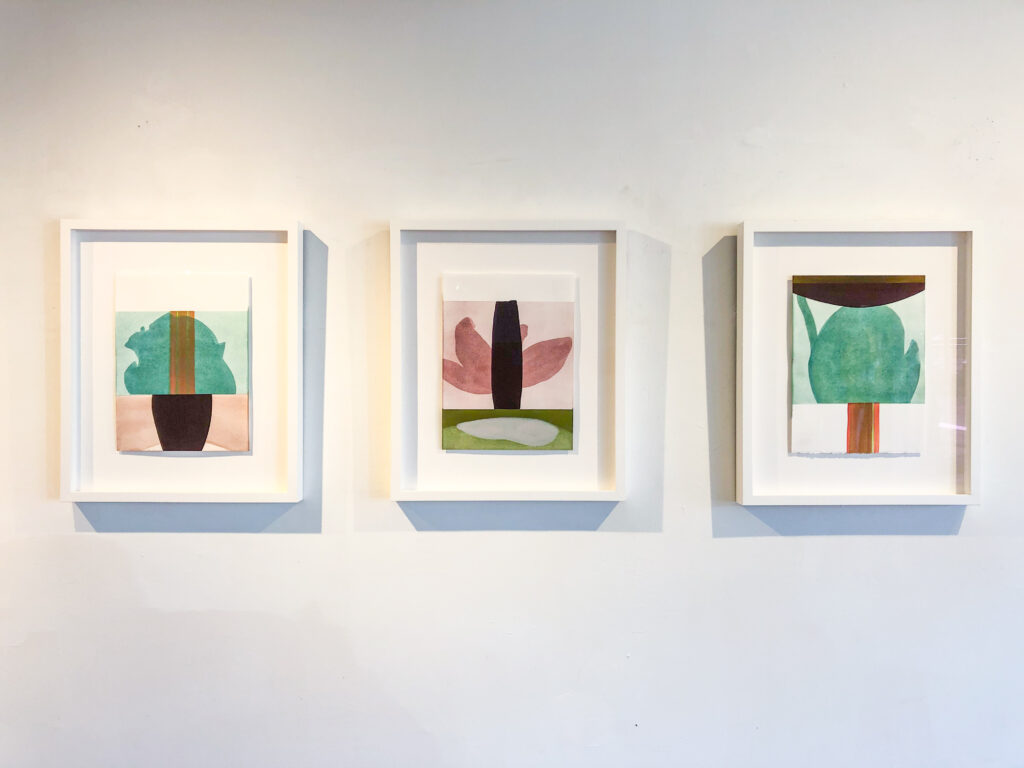
Each artwork, carrying a powerful punch, is selected by curator Jen Dragon with an eye towards intimacy. This sense of interiority unveils slowly enveloping conditions of unknowingness, exhilaration, mystification and, finally, joy. The art in this exhibition, while being of a small scale (most, but not all, works are about the size of a sheet of typing paper) induces sustained contemplation. To this point French philosopher Gaston Bachelard in his book of essays “Poetics of Space” suggests that such contemplation allows the mind and psyche to launch into what he termed a “reverie” mode, a sustained connection with feelings of well-being. This in turn overwhelms the psyche as it gives way, Bachelard asserts, to a subsequent condition of revelatory “intimate immensity.” Such imaginative play lends credence to German philosopher Friedrich Schelling’s delightfully accurate insight that art was the resolution of an infinite contradiction in a finite object.
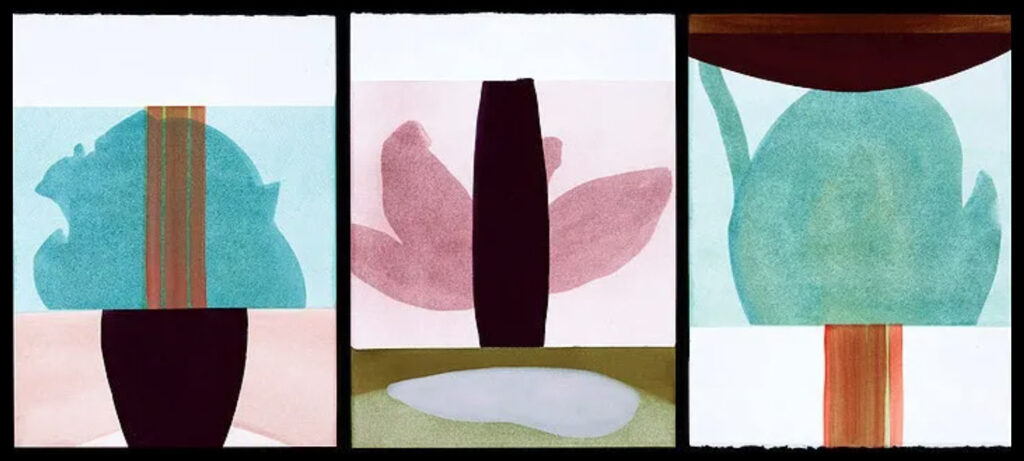
The forms in Sarah Hinckley’s gracefully languid and reductivist watercolor collages, with their intimations of tender vitality, lightly suggests the blooming of water lilies. The totemic, concentrated simplicity of each of her three abstract artworks work holds a nearly talismanic essence, a directness and freshness of approach that indirectly reminds this viewer of the essentialness of fluttering Tibetan prayer flags. Hinckley’s contributions to this exhibition sets a grace-note to Small Standing Tall that reverberates throughout the gallery.
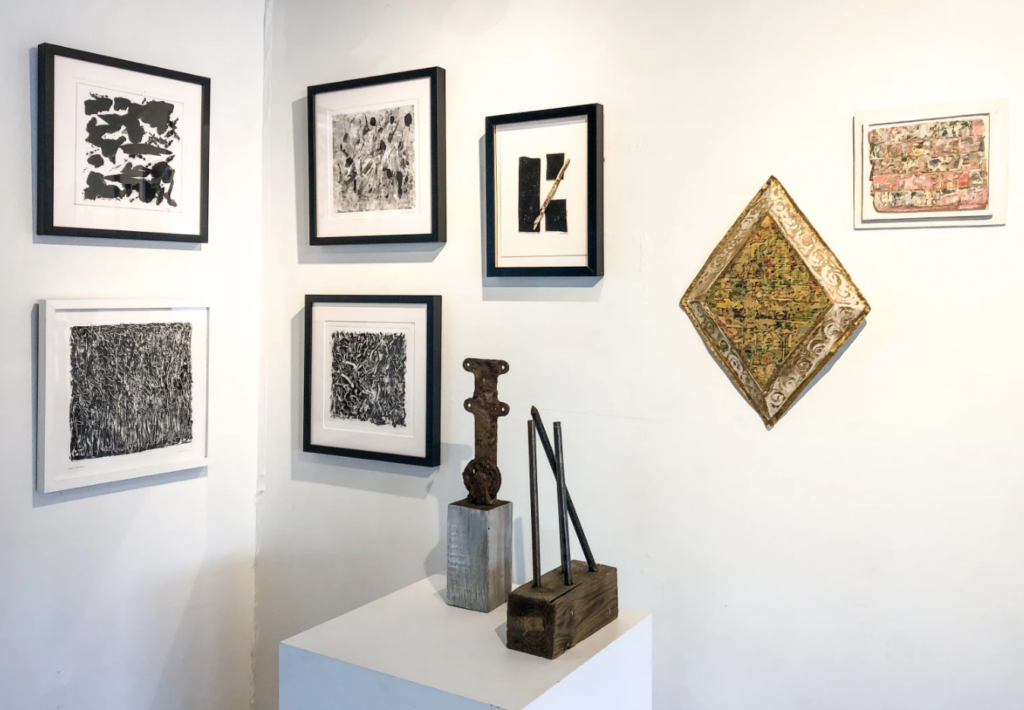
Michel Goldberg’s wall work aesthetic of using only black and white coloration is advanced through a sophisticated use of unique one-of-a kind techniques ranging from monotypes with unique textural qualities to flat assemblages on wood assemblages, to India ink-on-paper drawings. Goldberg treats each surface with a radical intensity. His pictorial surfaces are buzzing with activity: we see his applied, nearly miniaturized skeins of paint, his staccato stippling of tiny tremulous brush strokes as constitutive elements suggestive of overlaid handwritten secret alphabets. The artists painterly marks vacillate ambivalently between appearing to be self-effacing, mechanical and constructive at times; at other times they give the appearance of expressive randomness, of idiosyncratic, ostentatious deliberateness. A rigorous, visual poetry of interiority pervades.
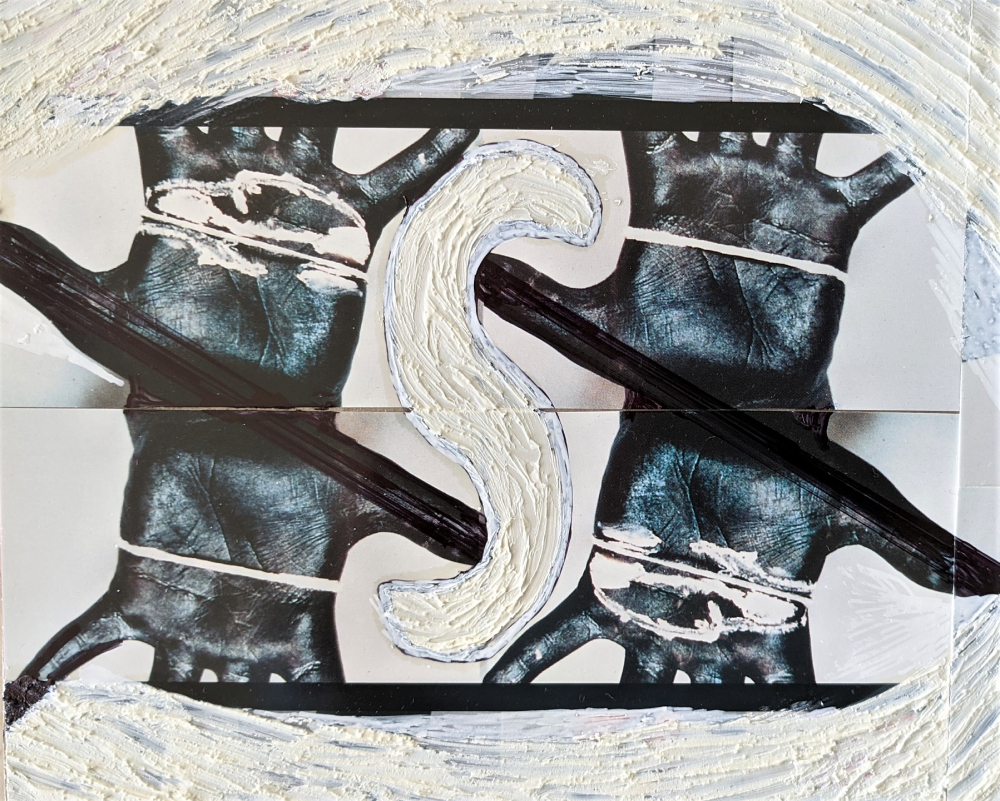
Kaethe Kauffman’s yogic-inspired, mixed media photo-collages are enigmatic, systematized and provocative abstract compositions. Appearing at first to be anxious puzzles, they contain stylized repetitive motifs and visual cadences of free-floating patterns incorporating recognizable body parts such as toes, fingers and palms. All of these forms and passages brings us up as viewers to a point of intense meditative release.
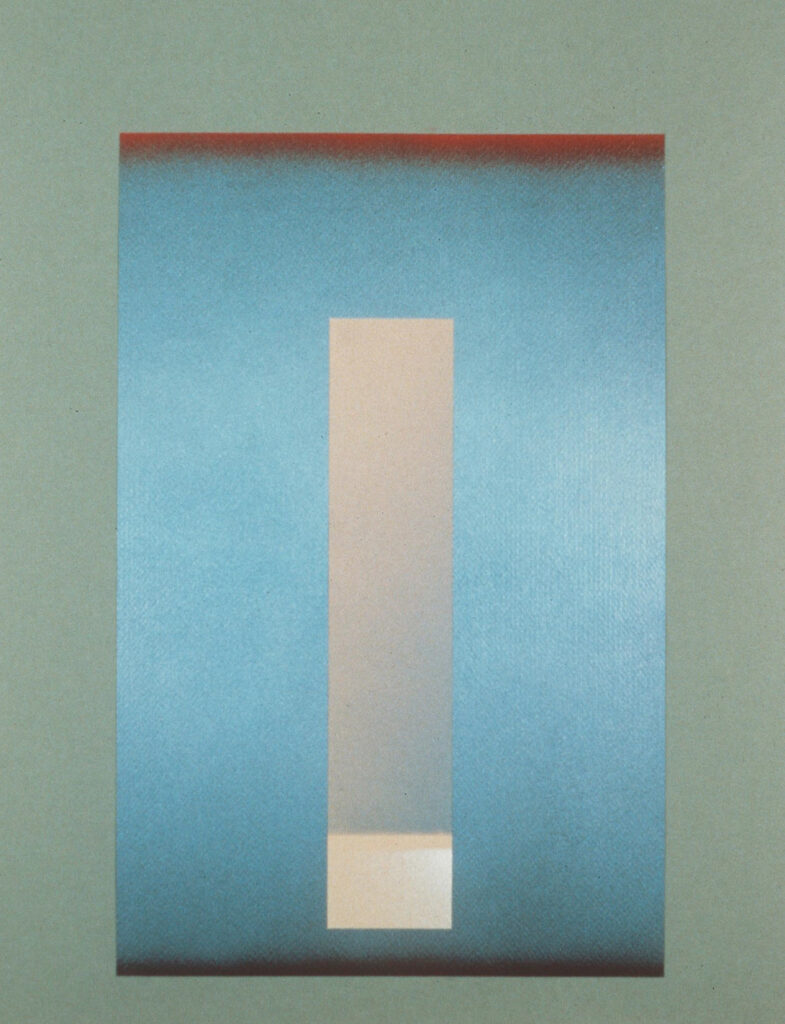
Victoria Lowe’s three limited edition metaphysical metal prints from her Sanctuary Series are experiential to the core. Her three artworks in Small Standing Tall are prints on metal with electro luminescent light that allows the work to throb with an interiorized, irradiated glow. Corporeal and perceptual marvels, Lowe’s artworks in the exhibition at the Joyce Goldstein Gallery compositionally include rigorous geometric forms that suggest otherworldly doors or windows glowing and primed to be open. Overall her works invite cognitive and intellective suspension given over to meditative intensity, an indwelling space suffused with the resonance of the transcendental as well as of the here-and-now.
Francie Lyshak’s contributions to Small Standing Tall consists of a small minimalist oil on linen diptych entitled “Circle and Turf” on which is inscribed random and repeated patterns that seem to emerge from the depths of the surface of the pictorial plane. Additionally, there are two sensationally intriguing small ink on rice paper drawings in the show that use tiny, nearly unreadable handwritten words – micrographia – as a private, hermetic language of the self and as building blocks to create abstract visual field patterns and shapes. Such intensive works indicate a meticulous, concentrated mind verging on nearly complete introversion. In all instances Lyshak’s stated artistic intention is to use the activities of painting and drawing to know emotions.
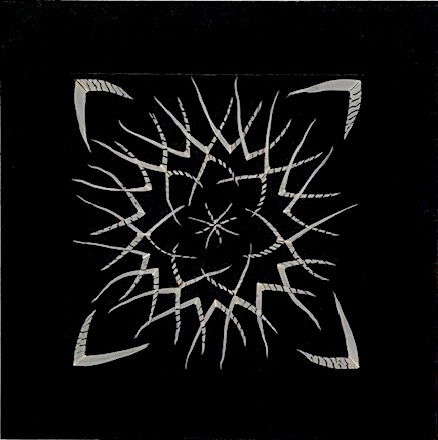
Nicki Marx’screates reduced, patterned compositions using feathers, suede and sand applied to board. She causes tinymeticulous collaged creations are fascinating examples of work created by an artist who has for years has followed the beat of her own drum. Marx is the maestro of the feather and she uses the term “feather mosaics” as an apt term to describe her aesthetic impulses. She uses entire feathers or parts of them (the barbules and barbs )( flamingo feathers are a favorite of hers), sorting them out, isolating them, adjusting them (using tweezers and magnifying glass, I assume) and affixing the small parts with the delicacy and precision of a watch maker on black undifferentiated fields to create unique jewel-like creations that catch the light just so. Marx uses her feather sections as individual brush strokes, and one gets lost in these nearly mystical creations.
Deborah Mastersis a master sculptorand painter equally comfortable making free standing monumental sculptures using clay and fabric as well as much smaller wall works made of painted and shaped wood. “Small Standing Tall” includes two works from her extensive series of Crosses which critic John Mendelsohn has described as “…like diary entries that capture the inner concerns of the artist.” Masters’ artworks Luna Moth Cross and Tsunami Cross act as auratic sacral votive offeringsthat have homespun, folkloric qualities of fervent directness and whimsy.
John A. O’Connor ’scontribution is “Columbus Discovered America, Right?” a compact and colorful archival pigment print from his black-board style textbook prints from his ongoing Chalkboard Series that he originated in 1985. As the title suggests O’Connor uses the old-fashioned child’s blackboard slate as the signifier of societal learning, accumulated knowledge, historicized claims and the inculcation of values and mores. He applies a variety of collaged and appropriated motifs, insignias, patterns, heraldic cartouches, and other ersatz memorabilia (such as flags, cards and maps) onto the slate format to create an ideational or mental setting and to make poetically incisive commentary on social conditioning.
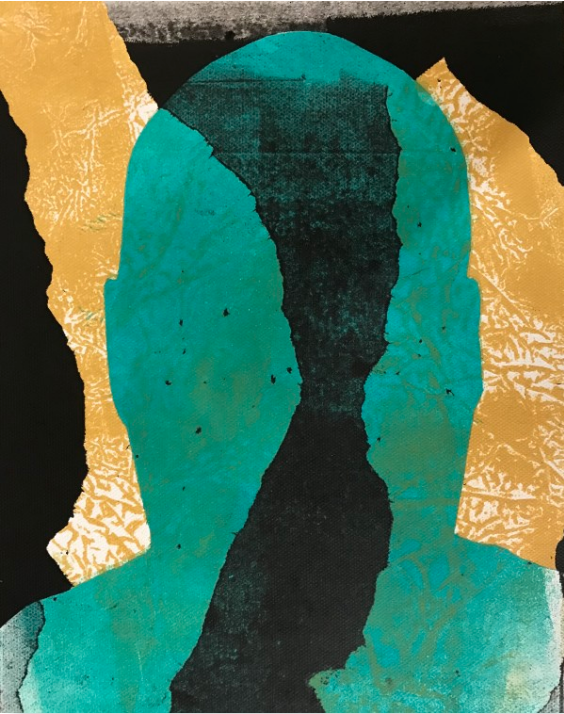
Eric Sanders’sthree monoprints on paperfrom his 2021Silhouette Series have a remarkable presence for their elusive uneasy relation to the self-portrait that always both asserts itself and seems to be in retreat, simultaneously. With their vivid blue tonalities’ sections indicating oceanic memories that are overlaid with black sections that serve as jarring interference factors and their black sections that are overlaid, indicating slashed or redacted memories, the overall effect is startingly poetic and hauntingly vulnerable.
James Singelis, as a portraitist is acutely aware that the human face is the primary field of expressive action, replete with a variety of looks whose meaning is open to interpretation. The artist’s achievement rests in his works’ evoking meditative questions for the viewer of what constitutes the authority of the likeness of the self, and how portraiture is the realm where the identity of the self is both fashioned and fabricated. Embedded in each of the artist’s portraits is the difficult inquiry of what constitutes the projection of the quality of authenticity and why do we so value it when we perceive it (correctly or not) in others. James Singelis ’sdelicately nuancedartworks using watercolor and pencil on paper evocatively addresses issues of portraiture as a particular challenge of artistic ingenuity and empathic insight.
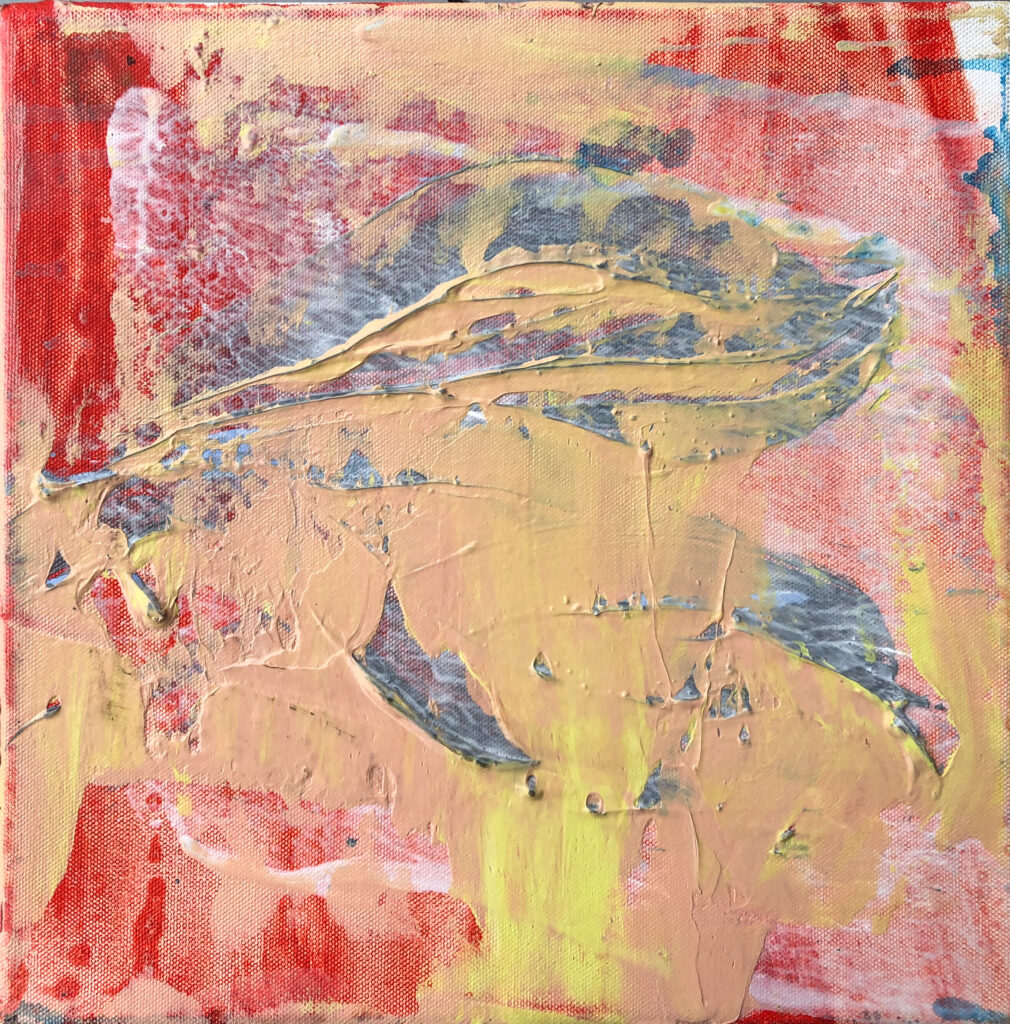
Francine Tint’s “Black Luxury”, “Black Swan” and “Tangerine” in Small Standing Tall are three abstract expressionist acrylics on canvas. After years of applied concentration Francine Tint has become a recognized master painter gifted with an acknowledged virtuosity in paint handling that suggests smolderingly immersive abstract energy systems. These systems invoke the sensations of uncontrollable expansion with its opposite: resistance and limitations. With their suggestions of disintegration and loss as well as with those of transformation and renewal the artist’s small paintings capture an unmistakable and unforgettable mood of outsized sensual and savage vitality.
In Small Standing Still, artist Gail Hillow Watkinspresents two small-scale hand-made abstract low-relief icons with distressed surfaces of fragmentary and faded letters or words. The artworks, heavily worked and re-worked, are made with mixed media, plaster, gold-leaf, plaster and wood. They sustain a riveting fetishistic quality and hold considerable aura. So much so that demand close-up viewing for full appreciation of the complexity of the interplay of their compacted and weathered surfaces. The artist in her notes has remarked that she considers her artworks as contemporary palimpsests where layers of information and memory slowly rise from below to the level of revealment. Indeed, there is a timely and timeless aspect to Watkins’s aesthetic as she combines the look of an ancient artifact like a cuneiform relief extracted from a ruin or excavation. Similarly, her artworks have the look and feel of modern-century keepsakes rescued from the depredations of, perhaps, a man-made or environmental disaster.
The exhibition quality of Small Standing Tall induces a surge of pleasurable energy in this viewer, affording me an aesthetic reverie of sorts, as I gazed at each of the artworks each fitted so carefully in the gallery’s limited precincts and each projecting an outsized presence. Every artwork presents itself in its own way and in its own terms as an undefinable yet exhilarating puzzle. What’s in play and what’s at play in the works in Small Standing Tall are individual, private multi-universes of seemingly infinitely expansive readings and poetic potentialities. More about the exhibition here: https://bit.ly/smallstandingtall
